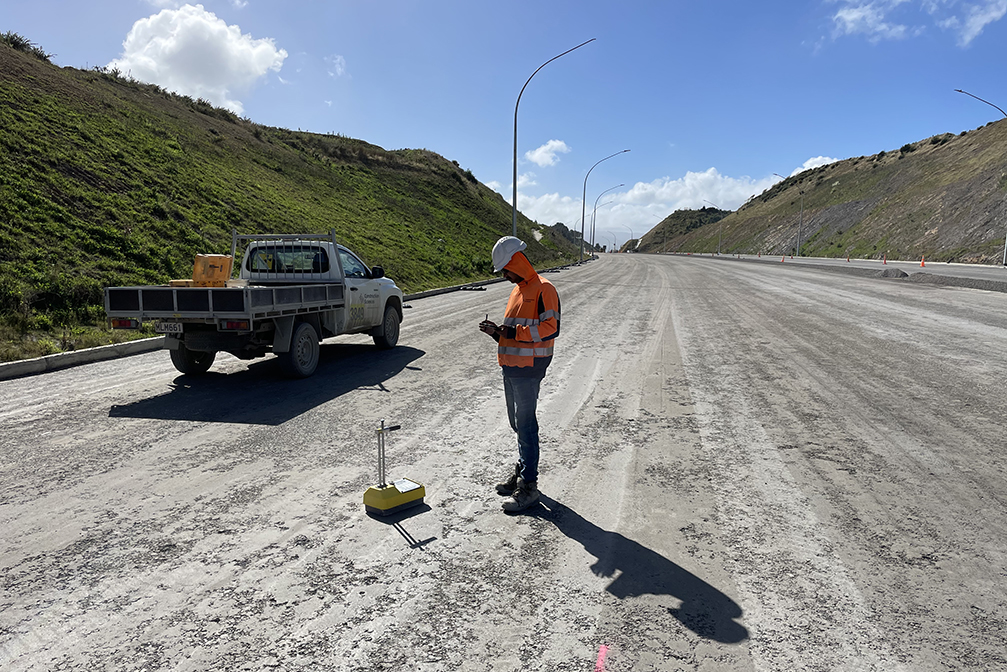The Nuclear Densometer is a scanning gauge that identifies the moisture, density and make up of materials or surfaces.

The little yellow box beside the worker in the centre of the photo above is a Nuclear Densometer (NDM).
NDMs are used in civil construction, geotechnical engineering and the petroleum industry, as well as for mining and even archaeology.
In our case, we’re using them to determine the density and moisture of every layer of the paving process (here the subbase pavement layer) to help us build a strong road.
The NDM emits a signal that is either reflected back by the paving layer or passes through it.
The device can only be used by someone with a nationally recognised qualification in materials testing who is trained both in the operation and safe practise of using the equipment. It travels in a special box in the back of a ute, away from the operator, with an ‘ionising material’ sign on the vehicle.

Engineers setting up a device called a Benkelman beam to test the pavement deflection under the rear-axle load and tyre pressure of a standard test truck with dual tyres and a specific weight and axle set. The measurement location is at the tip of the beam, between the dual tyres.
Here they’re checking the construction platform layer, which sits on top of the sub grade, for deflection. They are looking to see how much the pavement surface rebounds (ie moves up) when the truck moves away. Some flexibility is good. Too rigid and the pavement is brittle and breaks.